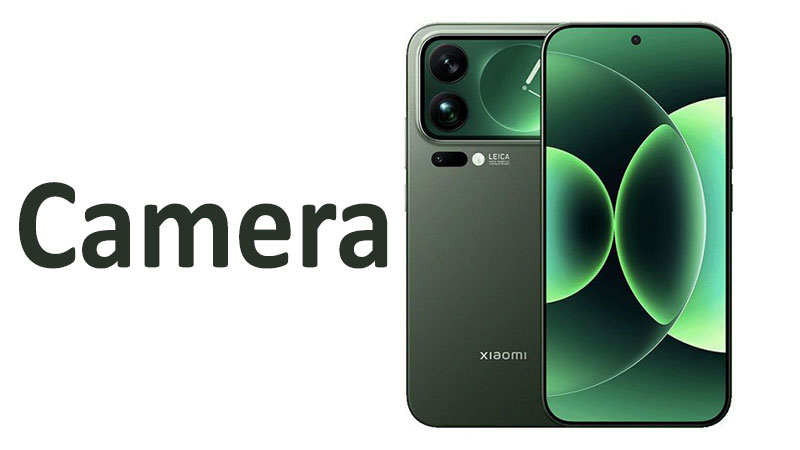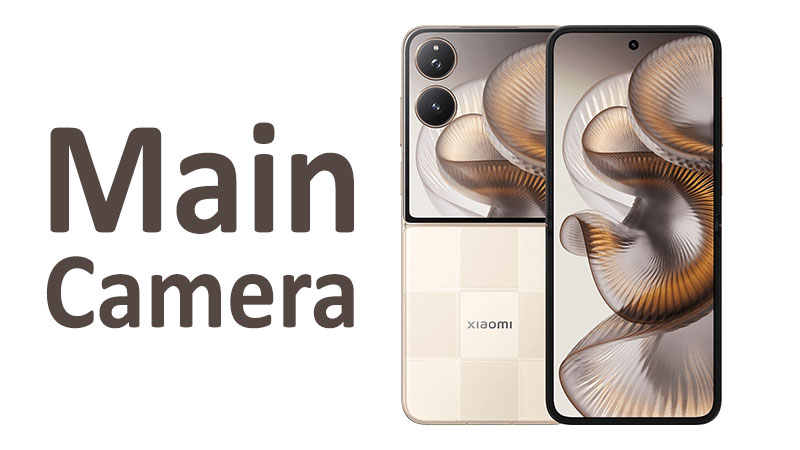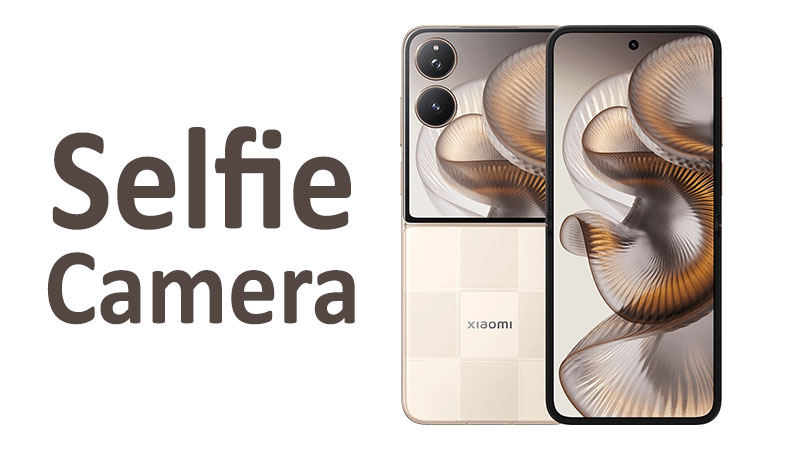The Xiaomi 17 Pro Max Camera system represents a monumental leap in mobile photography and videography. This specialized review will analyze the specifications, performance, and real-world results of this triple 50 MP array. The integrated camera hardware and software create an unparalleled visual capture experience. Understanding these advanced features is crucial for professional users and photography enthusiasts. This system defines the new gold standard for flagship mobile imaging.
The Masterpiece: Primary 50 MP Wide Sensor Review
The heart of the system is the formidable 50 MP main wide camera. It features a fast f/1.7 aperture lens. This wide aperture allows for maximum light collection. The resulting images demonstrate exceptional clarity and low-light performance. The sensor measures 1/1.28″. This large physical size significantly contributes to image quality.
Sensor Technology and Pixel Size
The main sensor utilizes a 1.22μm pixel size. This is a crucial specification for light gathering capability. Larger pixels capture more photons. This improves the signal-to-noise ratio in challenging lighting conditions. The system employs 4-in-1 pixel binning. This process merges four adjacent pixels into one super-pixel. Consequently, it produces a brighter, cleaner 12.5 MP final image. This method significantly enhances dynamic range and detail retention.
Optical Stabilization and Autofocus
This primary camera utilizes sophisticated dual pixel PDAF (Phase Detection Autofocus). This technology enables lightning-fast and highly accurate focusing, even on moving subjects. Additionally, the camera features powerful OIS (Optical Image Stabilization). The OIS counteracts natural hand shake. This is essential for sharp photos in low light and smooth video recording. The combination ensures crisp, professional-quality results every time the shutter is pressed.
Specialized Comparison: Sensor Size
The 1/1.28″ sensor size is competitive with the largest sensors in the industry. It offers a distinct advantage over the previous generation’s 1/1.4″ sensor. This difference translates to approximately 20% more light captured. Competitors often use smaller sensors in their main modules. The Xiaomi 17 Pro Max delivers superior natural depth of field and better exposure latitude as a result. This large sensor design is a key selling point for serious photographers.
Precision and Reach: 5x Periscope Telephoto Lens Analysis
The second major module is the 50 MP periscope telephoto camera. This lens provides outstanding optical zoom capabilities. It features 5x optical magnification. This allows users to capture distant subjects without any loss of image quality. The telephoto lens has a 115mm equivalent focal length. This is an excellent range for portraiture and detailed wildlife photography.
Periscope Technology and Aperture
The periscope design is physically necessary for this level of magnification. The light is folded by 90∘ inside the phone’s body. This keeps the device’s overall profile slim. The aperture is set at f/2.6. This is a very respectable size for a long-reach periscope lens. It ensures sufficient light reaches the 1/2.0″ sensor.
Focus and Stabilization for Telephoto
Shooting at 5x magnification requires precise focus and rock-solid stability. The telephoto lens includes PDAF for rapid focus acquisition. Furthermore, it features OIS specifically tuned for the long focal length. Without OIS, 5x images would be susceptible to motion blur. The system’s autofocus operates reliably from 30cm to infinity. This allows for both macro-style telephoto shots and distant landscape capture.
Specialized Comparison: Telephoto Zoom
Many competing flagships offer only 3x or 3.5x optical zoom. The Xiaomi 17 Pro Max’s 5x optical zoom offers significantly greater reach. This difference is especially noticeable when capturing architectural details or sports action. The quality remains pristine because no digital cropping is required up to the 5x level. This dedicated hardware advantage makes the telephoto unit superior for distance photography.
Expanding the View: 50 MP Ultrawide Sensor Review
The third essential module is the 50 MP ultrawide camera. This lens offers an expansive 102∘ field of view. It is ideal for sweeping landscapes, tight indoor shots, and dramatic architectural photography. The ultrawide focal length is 17mm. This provides a noticeably broad perspective compared to the main camera.
Sensor and Pixel Specifics
The ultrawide sensor size is 1/2.76″. This size is adequate for excellent performance in good lighting. It also uses a 0.64μm pixel size. Advanced computational photography compensates for the smaller pixel size. The 50 MP resolution allows for remarkable detail capture across the wide frame. Users can crop into ultrawide images while maintaining usable resolution.
Distortion Correction and Image Processing
Ultrawide lenses naturally produce barrel distortion at the edges of the frame. The Xiaomi 17 Pro Max software applies sophisticated algorithms to correct this. It intelligently straightens lines near the edges. The resulting images appear natural and geometrically accurate. This correction is performed seamlessly during image processing.
Specialized Comparison: Ultrawide Resolution
Many flagship phones often use lower resolution 12 MP or 13 MP sensors for their ultrawide lens. The Xiaomi 17 Pro Max, however, uses a full 50 MP ultrawide sensor. This massive resolution difference is highly beneficial. It allows for superior detail recovery across the entire expansive frame. It also provides flexibility for cropping and reframing images after they are captured. This commitment to resolution across all lenses is a “Pro Max” hallmark.
Front-Facing Excellence: The 50 MP Selfie Camera
The Xiaomi 17 Pro Max does not neglect the importance of the front-facing camera. It features a high-resolution 50 MP selfie camera. This single lens uses a wide 21mm focal length. The aperture is a fast f/2.2. This setup is ideal for sharp, detailed self-portraits and vlogging.
Autofocus and Video Capability
The front camera is equipped with PDAF (Phase Detection Autofocus). This is a crucial feature that many competing selfie cameras lack. PDAF ensures faces are always sharply in focus, even if the user moves slightly. For video, the selfie camera supports high-quality 4K recording at 30 fps or 60 fps. This capability makes it perfect for content creators who record vlogs. It provides professional-grade sharpness and smooth motion.
Software Features for Selfies
The front camera includes standard features like HDR and panorama modes. HDR (High Dynamic Range) balances highlights and shadows in challenging lighting. The panorama feature allows for wide group selfies. The processing benefits from the powerful Snapdragon 8 Elite Gen 5 chipset. This ensures instant processing of complex algorithms like portrait mode depth mapping.
Specialized Comparison: Selfie Autofocus
Most competitors rely on fixed focus selfie lenses. This forces the user to remain at a specific distance for sharpness. The Xiaomi 17 Pro Max’s PDAF on the 50 MP sensor provides maximum versatility. Users can take sharp selfies from various distances without effort. This autofocus capability is a massive quality of life improvement for any frequent user.
Videography Powerhouse: 8K and High-Frame-Rate Capture
The video recording capabilities of the Xiaomi 17 Pro Max are genuinely world-class. The camera system supports recording in professional formats and resolutions. This ensures the phone can serve as a primary capture device for serious filmmakers. The high processing power of the system handles these demanding files easily.
Maximum Resolution and High Dynamic Range
The phone captures video at a maximum resolution of 8K at 30 frames per second. This resolution is four times the detail of 4K. It captures incredibly fine detail suitable for large displays or professional cropping. The 8K video also supports HDR (High Dynamic Range) capture. This expands the color and brightness range significantly.
Professional Video Codecs and Color Depth
The device provides multiple professional video modes. It supports 4K recording at up to 120 frames per second. These high frame rates are perfect for cinematic slow-motion effects. Furthermore, the phone captures 10-bit HDR10+ and 10-bit Dolby Vision HDR. It also offers a 10-bit LOG mode. These 10-bit color depths are crucial for professional color grading in post-production. They provide billions of colors, far surpassing standard 8-bit video.
Ultra-Slo-Mo and Advanced Stabilization
For dramatic slow-motion effects, the camera records 720p video at an astounding 1920 frames per second. It also captures 1080p at 960 frames per second. These frame rates capture motion in exquisite detail. The stabilization system is robust. It uses gyro-EIS (Electronic Image Stabilization) across all video modes, including 4K and 8K. This ensures smooth, shake-free footage without needing an external gimbal.
Specialized Comparison: Video Codec Support
Most competitors limit their professional video capabilities to 8-bit color depth. They often restrict high frame rates to lower resolutions. The Xiaomi 17 Pro Max’s inclusion of 10-bit Dolby Vision and 10-bit LOG is a major differentiator. This professional-grade color data elevates the video system far above consumer-level offerings. This makes it a serious tool for high-end videography.
Integrated Features: Laser Autofocus and Leica Optics
The Xiaomi 17 Pro Max camera system includes powerful auxiliary features. These features enhance accuracy, color fidelity, and overall shooting flexibility. These details are often overlooked but are essential for a high-performance system.
Laser Autofocus for Precision
The phone utilizes a dedicated Laser AF system. This technology works alongside the PDAF. Laser AF precisely measures the distance to the subject. This is particularly useful in low-light environments where traditional PDAF struggles. It ensures fast, non-hunting focus in dimly lit scenes. The combination of Laser AF and PDAF results in best-in-class focusing speed and accuracy.
Color Spectrum Sensor
A specialized color spectrum sensor is included in the array. This sensor is essential for accurately reading the ambient light conditions. It measures the color temperature of the scene precisely. This data is used to adjust the white balance. The result is consistently accurate and natural colors in every photo, regardless of the light source. This prevents unnatural color casts in complex lighting scenarios.
Leica Lens and Image Tuning
The collaboration with Leica ensures premium lens quality and specialized image tuning. The camera uses Leica-designed optics. These lenses are optimized to reduce aberrations and improve edge-to-edge sharpness. Furthermore, the partnership includes signature Leica color science modes. Users can choose between vibrant or authentic color profiles. This artistic flexibility is a significant benefit for creative control.
Dual-LED Dual-Tone Flash
The phone includes a Dual-LED dual-tone flash unit. This advanced flash utilizes two LEDs with different color temperatures. The system intelligently mixes the light output. It achieves a more natural and balanced flash illumination. This prevents the harsh, clinical look of single-tone flashes, improving portrait quality in the dark.
Pros and Cons of the Xiaomi 17 Pro Max Camera
Evaluating the camera system requires a balanced look at its strengths and limitations. The specifications overwhelmingly favor maximum performance and versatility. However, certain factors may influence a buyer’s decision.
Camera Advantages (Pros)
- Triple 50 MP Sensors: Provides uniformly high resolution across the wide, ultrawide, and telephoto lenses.
- 5x Optical Periscope Zoom: Offers class-leading optical magnification for excellent long-distance detail.
- Professional Video Codecs: Supports 10-bit Dolby Vision and LOG capture for advanced color grading.
- Superior Autofocus System: The combination of dual pixel PDAF and Laser AF ensures rapid, accurate focusing.
- Large Main Sensor: The 1/1.28″ sensor excels at capturing high-quality images in challenging low-light conditions.
Potential Camera Drawbacks (Cons)
- Processing Demands: 8K video files and 50 MP images are extremely large. They require significant internal storage and processing power.
- Complex Features: Professional modes like LOG video may be too advanced for casual users. They require post-production knowledge.
- Ultrawide Pixel Size: The 0.64μm pixel size on the ultrawide sensor is smaller than the main sensor. This requires more reliance on computational enhancement in darkness.
Essential Knowledge for the Buyer and Reader
Understanding the capabilities and limitations of the Xiaomi 17 Pro Max camera is vital before purchase. This system is designed for a user who demands versatility and professional control. It is much more than a simple point-and-shoot camera.
Processor and Image Signal Processor (ISP) Synergy
The camera’s exceptional performance relies heavily on the Snapdragon 8 Elite Gen 5 processor. The integrated ISP handles the massive data output from the triple 50 MP sensors simultaneously. It manages complex tasks like noise reduction, HDR stacking, and 8K video encoding in real time. The processor’s power is what enables the phone to shoot 50 MP images in a burst sequence.
Importance of the Leica Partnership
The Leica branding is not merely a marketing tool. It signifies optimized lens hardware and deep software integration. The Leica color modes provide distinct, professional-looking artistic choices. Users who appreciate specific color palettes will find this collaboration highly valuable. It offers a unique aesthetic not found in other flagship phones.
Storage and File Size Considerations
Buyers should be fully aware of the storage implications. A single 8K video file consumes significant storage space. Likewise, 50 MP RAW or JPEG images are large. Users who plan to utilize 8K or 120 fps 4K should opt for a high-capacity storage variant. External backup solutions are also recommended for professional workloads.
Target Audience and Usage Scenario
This camera system targets the most demanding users: professional content creators, serious photography hobbyists, and mobile filmmakers. The features, like 10-bit LOG and 5x optical zoom, cater to users who want maximum creative control. For casual social media photographers, the immense power may be overkill. However, even casual users will benefit from the main sensor’s exceptional low-light performance and fast focusing. This is the definition of a high-performance imaging tool.
Conclusion: Making the Ultimate Photography Choice
The Xiaomi 17 Pro Max Camera system delivers on its promise of ultimate mobile imaging performance. The core strength lies in its perfectly balanced triple 50 MP array. This array offers a large primary sensor, a class-leading 5x periscope telephoto, and a high-resolution ultrawide. The hardware is backed by sophisticated OIS, Laser AF, and Leica-tuned optics.
For videography, the inclusion of 8K capture and 10-bit Dolby Vision and LOG modes is transformative. These features make it a genuine pocket cinema camera. Users who require maximum versatility, professional-grade output, and uncompromising quality should strongly consider this device.
The Xiaomi 17 Pro Max is the clear choice for anyone prioritizing mobile photography and video excellence. It offers the most complete and powerful imaging suite available today. Choosing this phone means choosing the pinnacle of current mobile camera technology.
Frequently Asked Questions (FAQ)
1. What does the 5x optical zoom mean for photographers?
The 5x optical zoom means the image is magnified five times using physical glass elements. This provides superior quality and detail compared to using only digital zoom.
2. Can the phone shoot professional slow-motion video?
Yes, the phone can capture ultra-slow-motion video at up to 1920 frames per second at 720p. It also records 960 frames per second at 1080p resolution.
3. How does the Leica lens partnership affect image quality?
The Leica partnership provides optimized lens designs that reduce visual flaws. It also adds signature color science modes for unique artistic color and tone in photos.
4. Is the 8K video feature stabilized?
Yes, the 8K video recording is stabilized using advanced gyro-EIS (Electronic Image Stabilization). This ensures the ultra-high-resolution footage remains smooth and stable.
5. What is the benefit of the 10-bit LOG video format?
The 10-bit LOG format captures billions of colors and a wider dynamic range. This is essential for professional video editors who need maximum flexibility during color grading in post-production.



